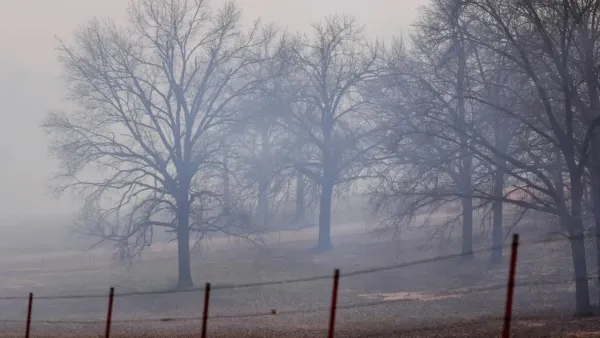
More than 25,000 people across Canada have had to flee their homes as dozens of wildfires continue to burn in Manitoba, Alberta, and Saskatchewan. Thick smoke from the fires is now drifting into parts of the northern United States, making the air dangerous to breathe in several places.
Officials say the situation could get worse in the coming days if hot, dry weather continues.
Manitoba has been the most affected so far, with about 17,000 people evacuated as of Saturday. The province declared a state of emergency last week as fast-moving fires threatened towns and cut off power to remote communities.
More than 5,000 evacuees are from the town of Flin Flon, located nearly 645 kilometers (400 miles) northwest of Winnipeg. A major fire that started near Creighton, Saskatchewan, just over the provincial border, quickly spread into Manitoba and has been hard to control.
Fire crews have had trouble fighting the flames because heavy smoke grounded water bombers, and a drone flying in the area forced operations to pause. In northern Manitoba, a fire knocked out power in Cranberry Portage, leading to a mandatory evacuation for around 600 people.
Around 1,300 people have been evacuated in Alberta, while Saskatchewan has relocated about 8,000 residents. Officials in Saskatchewan warned that the number of evacuees could rise if fires keep growing.
Saskatchewan Premier Scott Moe said the weather is making everything harder.
“The next four to seven days are absolutely critical until we can find our way to changing weather patterns, and ultimately a soaking rain throughout the north,” Moe said during a press conference on Saturday.
He added that hot, dry conditions are causing fires to spread quickly, and crews and support services are running low on resources.
Smoke from the Canadian wildfires is drifting into U.S. border states and causing serious air quality problems. The U.S. Environmental Protection Agency reported “unhealthy” air levels on Sunday in parts of North Dakota, Montana, Minnesota, and South Dakota.
“Air quality and visibility due to wildfire smoke can fluctuate over short distances and can vary considerably from hour to hour,” Saskatchewan’s Public Safety Agency warned. “As smoke levels increase, health risks increase.”
Bryan Jackson, a meteorologist with the U.S. National Weather Service, said the problem isn’t going away anytime soon.
“We should expect at least a couple more rounds of Canadian smoke to come through the U.S. over the next week,” he said.
The U.S. Department of Agriculture’s Forest Service sent an air tanker to Alberta and is planning to deploy 150 firefighters and equipment to help Canada fight the fires.
Meanwhile, in Idaho — which borders Canada — a wildfire has already burned at least 100 acres as of Sunday. The blaze forced some road closures and evacuations. One structure was damaged, but authorities haven’t released more details yet.
Firefighters in Idaho say strong winds between 15 to 20 mph and the rough landscape are making their job even more difficult.
Back in Manitoba, evacuation centers have opened across the province, including one as far south as Winkler — just 20 kilometers (12 miles) from the U.S. border. In Winnipeg, public buildings are being used to house evacuees, since hotels are already full with fire refugees, tourists, and business travelers.
At a press conference on Saturday, Manitoba’s Indigenous leaders said they were concerned about the lack of available housing for people fleeing the fires. They urged the government to step in and prioritize evacuees when it comes to hotel space.
Assembly of Manitoba Chiefs Grand Chief Kyra Wilson said this is one of the largest evacuations Manitoba has seen since the 1990s.
“It’s really sad to see our children having to sleep on floors. People are sitting, waiting in hallways, waiting outside, and right now we just need people to come together. People are tired,” Wilson said.
Canada’s wildfire season typically runs from May through September. Last year, 2023, was the worst wildfire season the country had ever recorded. Smoke from those fires blanketed much of North America for months.
Now, with 2024’s fire season just beginning, officials are watching the weather closely and hoping for rain to slow down the fast-moving flames. Until then, thousands of Canadians are left waiting and hoping they’ll be able to return home soon.